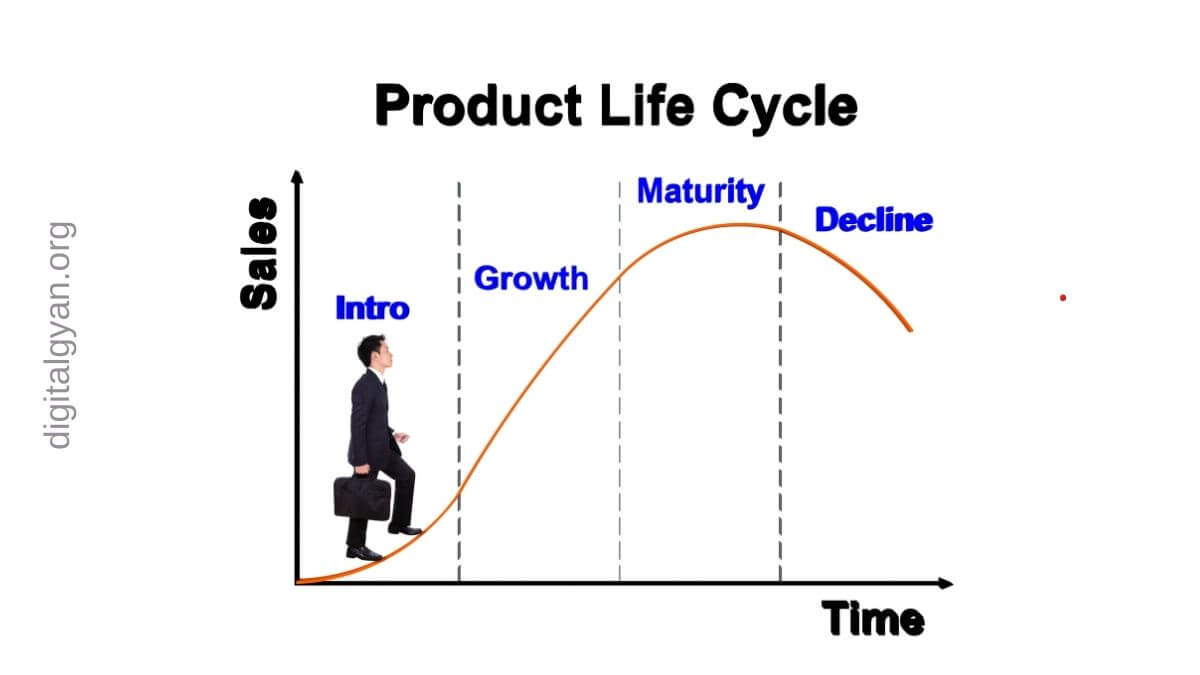What is the Product Life Cycle and Its Various Phases?
The product life cycle starts from launching the product to gaining acceptance, reaching a peak, declining and disappearing from markets.
The product life cycle is a popular term for studying the relationship between the product’s lifespan and demand. The product life cycle illustrates the typical path or phases a product follows.
Every product or service, from the latest smartphone to your favourite childhood cereal, goes through a predictable journey. This journey, known as the product life cycle (PLC), can be a powerful tool for businesses to understand their products and develop successful product marketing strategies.pen_spark
In this post, we will learn in-depth about the concept of the product life cycle, its various phases, and how to identify the particular stage of the cycle.

Phases of Product Life Cycle (PLC)
The life cycle concept, popularized by Harvard Business School professor Theodore Levitt, proposes that a product moves through four stages: introduction, growth, maturity, and decline. By understanding these stages and how the cycle works, product managers can make informed decisions about everything from product features to marketing campaigns.
Introduction Stage
During the Introduction phase, the product is introduced to the market through a concentrated and intensive marketing effort designed to establish a distinct identity and generate maximum awareness. At this juncture, numerous trial or impulse purchases will be made.
This is the exciting yet challenging phase of introducing a new product or service to the market. At this stage, product awareness is low, and there might be a limited number of early adopters using the product. Product features are still being fine-tuned, and marketing efforts are focused on creating brand awareness and educating potential customers about the product needs it fulfils. Since the product is new, there’s a high focus on research and development, and marketing costs tend to be high.
Growth Stage
If the introduction stage is successful, the product will enter a growth phase. Here, sales begin to climb rapidly as consumer adoption increases. Product marketing efforts shift towards highlighting the product’s benefits and differentiating it from similar products entering the market.
During this stage, competition might start to emerge, so companies often introduce new product features or expand their product line to maintain a competitive edge. Production costs decrease as economies of scale kick in, allowing for potential price reductions to attract a wider audience.
Maturity Stage
The product reaches its peak sales in the maturity stage. The market becomes saturated, and competition is fierce. Product features are well-established, and marketing strategies focus on maintaining brand loyalty and defending market share. Product life cycle management becomes crucial at this stage, as companies may look to innovate through cost-cutting measures, product line extensions, or strategic partnerships to extend the product’s life cycle.
Saturation and Decline Stage
Inevitably, every product or business will eventually see a decline in sales. This can be due to technological advancements, changing consumer preferences, or the emergence of superior products.
During this stage, companies may choose to reduce production costs, introduce deep discounts, or even phase out the product altogether. Resources are often shifted towards developing new products or services to replace the declining one.
Product Lifecycle Management: A Strategic Advantage
Understanding the product’s life cycle allows for proactive product lifecycle management. By anticipating the needs of the product at each stage, companies can develop targeted strategies to maximise success. This might involve introducing new features during growth, optimising production during maturity, or exploring product innovations to prepare for potential decline.
The four stages of the product life cycle offer a valuable framework for understanding a product’s or company’s journey. By using this cycle as a guide, product managers can make informed decisions about product features, marketing strategies, and resource allocation, ultimately increasing the chances of a successful product or service.
Conclusion
The product life cycle has four phases: introduction, growth, maturity, and decline. At the introduction stage, companies invest in marketing and promotion. In the growth stage, sales increase. During the maturity stage, sales stabilise, and competitors may enter the market. In the decline stage, sales decrease due to changes in consumer preferences or technological advancements. Companies may discontinue the product or revamp it to extend its life cycle. Analysis of the life cycle stages of the product can help companies to improve product development in alignment with the market demand.

